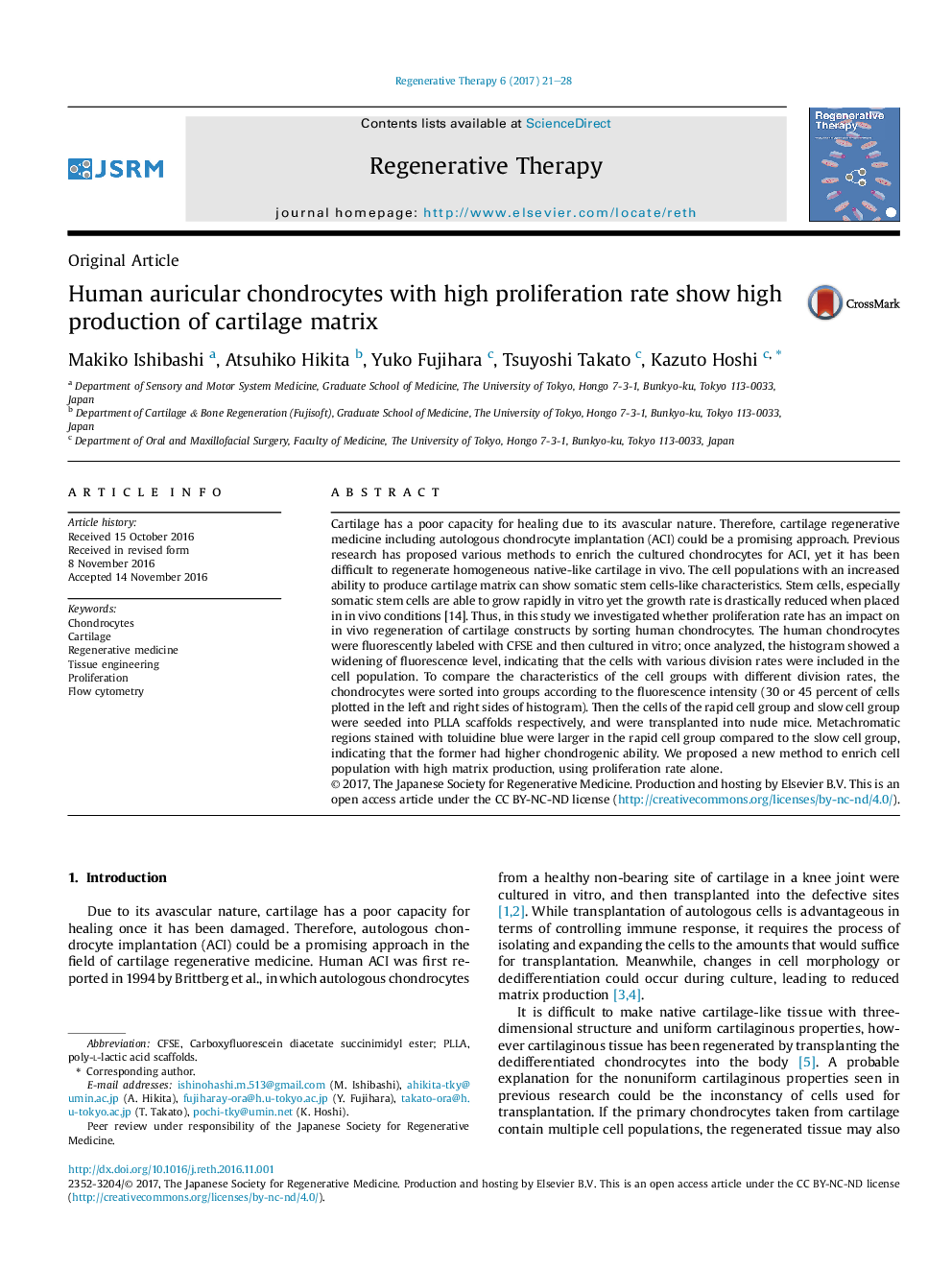| کد مقاله | کد نشریه | سال انتشار | مقاله انگلیسی | نسخه تمام متن |
|---|---|---|---|---|
| 5516194 | 1542360 | 2017 | 8 صفحه PDF | دانلود رایگان |
- Cultured human chondrocytes that exhibited rapid proliferation rates had a higher chondrogenic ability.
- Excluding cell surface markers, we proposed a new method to enrich cell population with high matrix production.
- This method would improve the quality of the cell source in cartilage regenerative medicine.
Cartilage has a poor capacity for healing due to its avascular nature. Therefore, cartilage regenerative medicine including autologous chondrocyte implantation (ACI) could be a promising approach. Previous research has proposed various methods to enrich the cultured chondrocytes for ACI, yet it has been difficult to regenerate homogeneous native-like cartilage in vivo. The cell populations with an increased ability to produce cartilage matrix can show somatic stem cells-like characteristics. Stem cells, especially somatic stem cells are able to grow rapidly in vitro yet the growth rate is drastically reduced when placed in in vivo conditions [14]. Thus, in this study we investigated whether proliferation rate has an impact on in vivo regeneration of cartilage constructs by sorting human chondrocytes. The human chondrocytes were fluorescently labeled with CFSE and then cultured in vitro; once analyzed, the histogram showed a widening of fluorescence level, indicating that the cells with various division rates were included in the cell population. To compare the characteristics of the cell groups with different division rates, the chondrocytes were sorted into groups according to the fluorescence intensity (30 or 45 percent of cells plotted in the left and right sides of histogram). Then the cells of the rapid cell group and slow cell group were seeded into PLLA scaffolds respectively, and were transplanted into nude mice. Metachromatic regions stained with toluidine blue were larger in the rapid cell group compared to the slow cell group, indicating that the former had higher chondrogenic ability. We proposed a new method to enrich cell population with high matrix production, using proliferation rate alone.
Journal: Regenerative Therapy - Volume 6, June 2017, Pages 21-28
